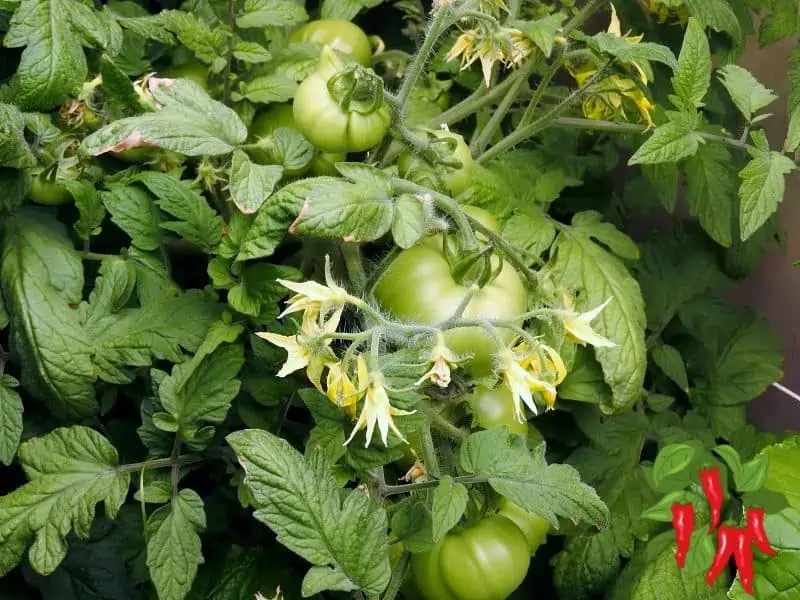This post contains affiliate links. If you buy something from one of our links we may earn a commission. Thanks
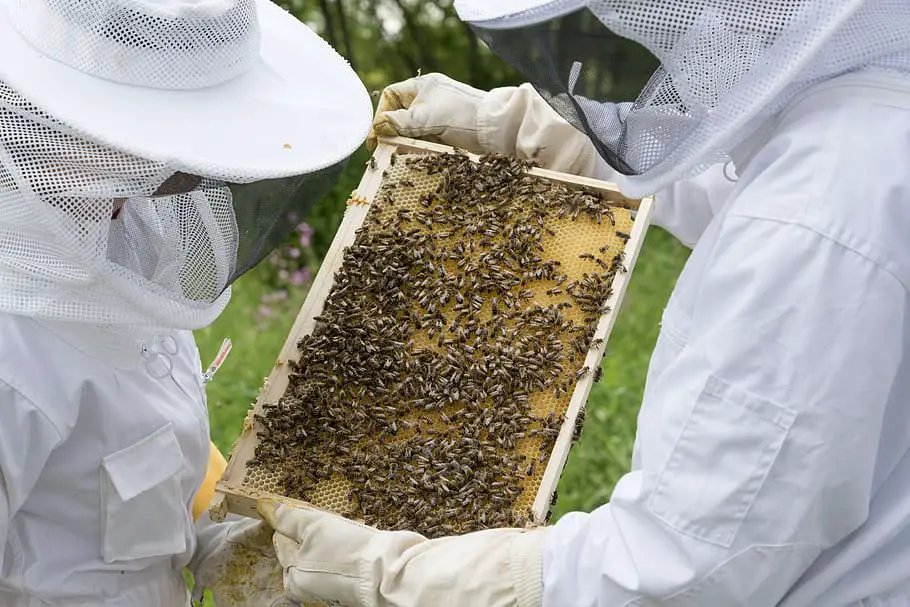
Discover the buzz about urban beekeeping! Uncover its growth, benefits, challenges, and how you can get started. Dive into ‘What is urban beekeeping?’ with us.
Ever wondered what is urban beekeeping and why it’s creating such a buzz in cities around the world? Well, you’re in the right place!
Urban beekeeping is more than just a hobby—it’s a movement that’s transforming concrete jungles into thriving ecosystems.
It’s about city dwellers, just like you and me, playing host to these incredible pollinators, right in the heart of our bustling neighborhoods.
So, let’s dive in and explore this fascinating world together, shall we?
What is Urban Beekeeping?
Have you ever asked yourself, what urban beekeeping is? If so, you’re about to embark on a fascinating journey!
In this post, we’re going to delve into the world of urban beekeeping, exploring its growth, the unique practices involved, and the crucial role it plays in our cities.
We’ll also shed light on the benefits and challenges it presents, and even guide you on how to get started if you’re feeling inspired.
From understanding its impact on bee populations to answering your burning questions, we’ve got a lot to cover.
So, let’s get started and uncover the sweet secrets of urban beekeeping together!
Definition of Urban Beekeeping
Urban beekeeping, as the name suggests, is the practice of keeping bees in an urban setting.
It’s about nurturing these buzzing creatures right in the heart of our cities, on rooftops, in backyards, or even on balconies.
But it’s not just about having a hive and collecting honey. It’s about creating a symbiotic relationship with these incredible insects, providing them with a safe haven while they go about their crucial work of pollination.
Brief Overview of the Practice and its Importance
Now, you might be wondering why urban beekeeping is such a big deal. Well, it’s more important than you might think!
Urban beekeeping plays a crucial role in maintaining and enhancing biodiversity in our cities.
Bees are some of nature’s most efficient pollinators, and by keeping them in urban areas, we’re helping to ensure a diverse range of plants can thrive.
But the benefits don’t stop there. Urban beekeeping also brings communities together, fostering a sense of connection with nature even in the midst of concrete and skyscrapers.
It’s a practice that not only benefits the bees and the environment but also enriches our own lives, providing a unique opportunity to learn about these fascinating creatures and the vital role they play in our world.
Urban beekeeping is the practice of keeping bee colonies (hives) in towns and cities. It is also referred to as hobby beekeeping or backyard beekeeping. Bees from city apiaries are said to be “healthier and more productive than their country cousins”. As pollinators, bees also provide environmental and economic benefits to cities. https://en.wikipedia.org/wiki/Urban_beekeeping
The Growth and Feasibility of Urban Beekeeping
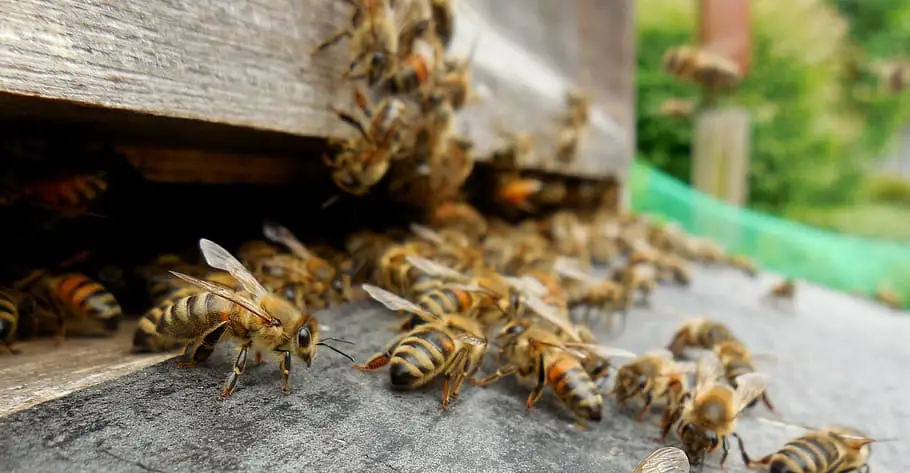
Let’s now turn our attention to the growth and feasibility of urban beekeeping. It’s a trend that’s been buzzing in cities around the globe, but how did it all start?
And more importantly, is it a sustainable practice for the future?
In this section, we’ll delve into the history of urban beekeeping, explore the factors that have contributed to its rise, and discuss whether it’s a feasible option for city dwellers.
So, let’s dive in and explore the fascinating journey of urban beekeeping!
Historical Context and Recent Trends
Urban beekeeping isn’t a new phenomenon. In fact, it has roots that go back centuries.
In the past, city dwellers kept bees for their honey, which was a valuable commodity.
However, with the advent of modern agriculture and the growth of cities, beekeeping gradually moved to rural areas.
Fast forward to the 21st century, and we’re witnessing a resurgence of this age-old practice in our cities.
This revival has been driven by a growing awareness of the importance of bees for biodiversity and food production, coupled with a desire to reconnect with nature in an increasingly urbanized world.
Today, you’ll find hives on rooftops, in community gardens, and even in some unexpected places like airports and business districts!
Factors Contributing to its Growth
Several factors have contributed to the growth of urban beekeeping.
Firstly, there’s been a shift in societal attitudes towards sustainability and local food production, and urban beekeeping fits perfectly into this narrative.
It’s a way for city dwellers to contribute to their local ecosystem and produce their own honey.
Secondly, urban environments can actually offer a diverse range of forage for bees.
Cities often have a wide variety of plants flowering throughout the year, providing a rich and varied diet for the bees.
Lastly, changes in legislation have also played a part. Many cities have revised their laws to allow beekeeping, recognizing its environmental benefits and the role it can play in education and community building.
This has opened the door for more people to get involved and has certainly played a part in urban beekeeping’s rise in popularity.
The Practice of Urban Beekeeping
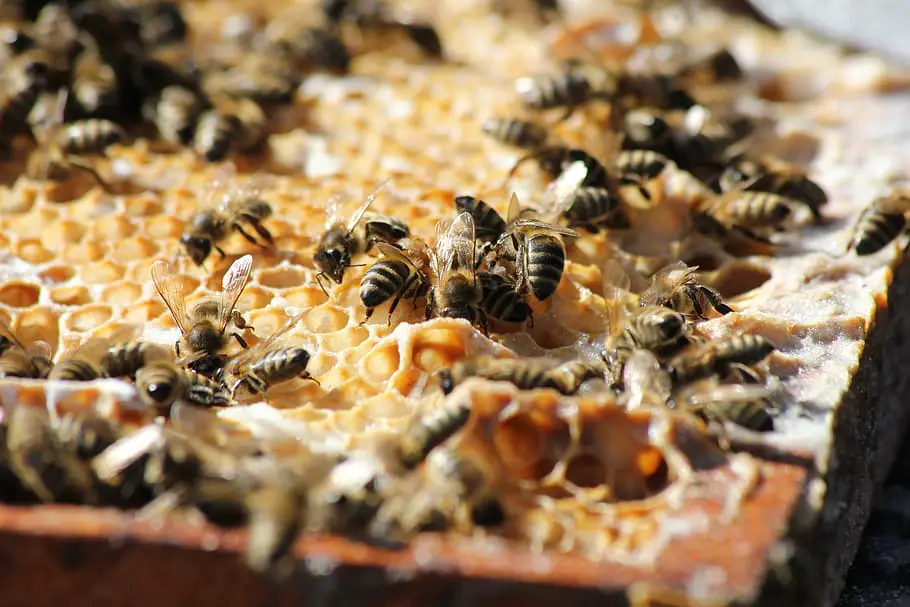
Ready to dive deeper into the hive? In this section, we’re going to explore the actual practice of urban beekeeping.
It’s one thing to talk about the concept, but what does it really involve on a day-to-day basis? And how does it differ from its rural counterpart?
Plus, we’ll take a look at the role of urban beekeepers, those dedicated individuals who are the heart and soul of this movement.
So, let’s roll up our sleeves and get a closer look at the fascinating world of urban beekeeping!
How Urban Beekeeping Works
Urban beekeeping might seem like a complex task, but it’s actually quite straightforward once you get the hang of it.
It starts with setting up a hive in a suitable location, which could be a rooftop, a balcony, or a backyard.
The bees are then introduced to their new home, and the beekeeper’s role is to monitor and care for the hive, ensuring the bees are healthy and the queen is laying eggs.
One of the unique aspects of urban beekeeping is the need to manage the bees’ interactions with the surrounding human population.
This might involve using certain types of hives or techniques to minimize swarming or educating neighbors about what you’re doing and why it’s beneficial.
Key Differences Between Urban and Rural Beekeeping
While the basic principles of beekeeping remain the same whether you’re in the city or the countryside, there are some key differences.
One of the main ones is space. Urban beekeepers often have to work with smaller areas, which can influence the type of hive they use and how many they can manage.
Another difference is the forage available to the bees.
In rural areas, bees might have access to large fields of a single type of crop, while in cities, they’re more likely to encounter a diverse range of plants in parks, gardens, and roadside plantings.
This can actually be beneficial for the bees, providing them with a varied diet and a longer foraging season.
The Role of Urban Beekeepers
Urban beekeepers are the champions of this movement. Their role goes beyond just caring for the bees.
They’re also educators, raising awareness about the importance of bees and pollinators.
They’re community builders, often working with local schools, businesses, and community groups.
And they’re advocates, pushing for changes in local laws and regulations to support urban beekeeping.
In short, they’re at the forefront of making our cities more bee-friendly places!
Benefits of Urban Beekeeping
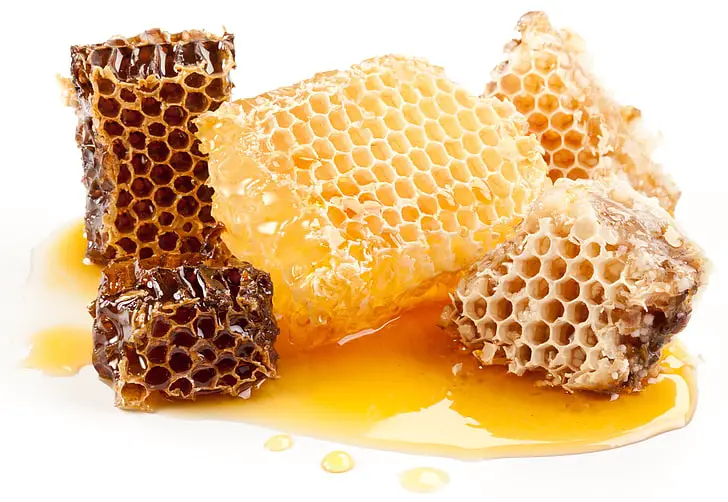
Urban beekeeping isn’t just about the bees. It’s about us, too! In this section, we’re going to explore the many benefits of urban beekeeping.
From environmental perks to community connections and personal rewards, there’s a lot to love about this practice.
So, let’s take a moment to appreciate the sweet advantages that urban beekeeping brings to our cities and our lives.
Ready to discover the buzz-worthy benefits? Let’s dive in!
Environmental Benefits
Urban beekeeping has a host of environmental benefits.
Bees are some of nature’s most efficient pollinators, and by keeping them in urban areas, we’re helping to ensure a diverse range of plants can thrive.
This is crucial for maintaining biodiversity within our cities.
Plus, bees help to pollinate many of the fruits, vegetables, and nuts we eat, so they’re essential for local food production.
Benefits to the Community
Urban beekeeping also brings communities together. It’s a practice that fosters a sense of connection and shared responsibility for our local environment.
Beekeepers often work with schools, community groups, and local businesses, providing educational opportunities and raising awareness about the importance of bees.
Plus, there’s something quite special about tasting honey that’s been produced in your own neighborhood!
Personal Benefits for the Beekeeper
For the beekeepers themselves, the benefits can be profound. There’s the joy of learning about these fascinating creatures and the satisfaction that comes from caring for them.
There’s the thrill of harvesting your first jar of honey and the sense of connection with nature that comes from being a part of the bee’s life cycle.
And let’s not forget the calming, meditative aspect of beekeeping It’s often described as a great stress reliever. In short, urban beekeeping can be a rewarding and enriching hobby.
Challenges of Urban Beekeeping
While urban beekeeping has its sweet rewards, it’s not without its challenges.
From finding the right location for a hive to navigating local laws and managing neighborly relations, urban beekeepers face a unique set of hurdles.
But don’t worry, these challenges are all part of the journey and can often be overcome with a bit of knowledge and preparation.
In this section, we’ll explore some of the common challenges of urban beekeeping and provide some tips on how to navigate them.
So, let’s delve into the less buzzed-about side of urban beekeeping!
Space and Location Issues
One of the first challenges urban beekeepers often face is finding a suitable location for their hive.
Space can be at a premium in the city, and not all spaces are suitable for a beehive. You’ll need a spot that’s safe for the bees, accessible for you to manage, and ideally, not too disruptive for your neighbors.
Rooftops, balconies, or secluded corners of a garden can all make good locations. It’s also important to consider the forage available to the bees. Areas with a good variety of flowering plants are ideal.
Legal and Regulatory Challenges
Another hurdle can be local laws and regulations. While many cities have become more bee-friendly in recent years, there can still be rules about where and how you can keep bees.
This might involve obtaining a permit, complying with certain management practices, or restrictions on the number of hives you can have.
It’s important to research and understand your local regulations before you start.
Interactions with Neighbors and Community
Finally, managing interactions with neighbors and the wider community can be a challenge.
Not everyone understands the benefits of urban beekeeping and some people may have concerns about safety, especially if they have allergies.
Communication is key here. It’s a good idea to talk to your neighbors about what you’re doing, explain the benefits, and reassure them about any concerns they might have.
Offering a jar of local honey can also be a great icebreaker!
Urban Beekeeping Sustainability
As we delve deeper into the world of urban beekeeping, it’s important to consider its sustainability.
How does this practice impact bee populations? What role does it play in urban ecosystems? And is it a feasible long-term solution for our cities?
In this section, we’ll explore these questions and more. We’ll look at the sustainability of urban beekeeping from an ecological, social, and economic perspective.
So, let’s continue our journey and examine the sustainability of this buzzing trend!
Impact on Bee Populations
Urban beekeeping can have a positive impact on bee populations, especially in areas where wild habitats have been lost.
Cities can offer a diverse range of forage and, with careful management, urban hives can support healthy, thriving bee colonies.
However, it’s important to note that good beekeeping practices are crucial. Overcrowding, poor disease management, or introducing non-native bees can have negative impacts.
So, while urban beekeeping has the potential to support bee populations, it needs to be done responsibly.
Role in Urban Ecosystems
Bees play a vital role in urban ecosystems. They’re excellent pollinators, helping to fertilize flowers by transferring pollen from the male parts of a flower to the female parts.
This helps to increase the genetic diversity of the plants in our cities, making them more resilient.
By keeping bees, urban beekeepers are helping to support this important ecological process.
Long-Term Feasibility
As for the long-term feasibility of urban beekeeping, the signs are promising.
With the growing interest in local food production, sustainability, and biodiversity, urban beekeeping is likely to continue to grow in popularity.
Changes in urban planning and design are also making our cities more bee-friendly.
However, the long-term success of urban beekeeping will depend on ongoing education and support for beekeepers, sensible regulation, and continued research into best practices.
Getting Started with Urban Beekeeping
Feeling inspired to join the urban beekeeping movement? That’s fantastic! In this section, we’re going to guide you through the first steps of your beekeeping journey.
From the necessary equipment to the best practices for beginners, we’ve got you covered.
Starting a beehive might seem daunting, but with a bit of knowledge and preparation, it’s a journey that’s well within reach.
So, let’s get started and take the first steps toward becoming an urban beekeeper!
Necessary Equipment and Resources
Starting your urban beekeeping journey requires some essential equipment.
First and foremost, you’ll need a beehive. There are various types of hives available, but for beginners, a Langstroth hive or a top-bar hive are often recommended due to their simplicity and ease of management.
Next, you’ll need some basic beekeeping tools. This includes a bee suit to protect you from stings, a smoker to calm the bees when you’re inspecting the hive, and a hive tool for opening the hive and manipulating the frames.
And of course, you’ll need the bees themselves! You can purchase bees from a reputable supplier, or, if you’re lucky, you might be able to obtain a swarm from a local beekeeper.
Best Practices for Beginners
As a beginner, it’s important to start off on the right foot. Here are a few best practices to keep in mind:
Education is key: Before you get your bees, take the time to learn about bee behavior and hive management.
There are many great resources available, from books to online courses and local beekeeping clubs.
Start small: It’s a good idea to start with just one or two hives. This will allow you to get a feel for beekeeping without becoming overwhelmed.
Regular inspections: Regular hive inspections are crucial for monitoring the health of your colony and catching any potential issues early.
Be a good neighbor: If you’re keeping bees in a residential area, be mindful of your neighbors. Place your hives thoughtfully, provide a water source so bees don’t visit the neighbor’s pool, and educate your neighbors about what you’re doing.
Seek support: Don’t be afraid to ask for help. The beekeeping community is generally very supportive, and experienced beekeepers can provide invaluable advice.
Remember, beekeeping is a journey, not a destination. There’s always something new to learn, so take your time and enjoy the process!
What is Urban Beekeeping? FAQs
Still buzzing with questions about urban beekeeping? You’re not alone! In this section, we’re going to tackle some of the most frequently asked questions about this fascinating practice.
From the challenges of urban beekeeping to its benefits and sustainability, we’ve got your queries covered.
And we’ll even delve into some beekeeper slang! So, let’s get those burning questions answered and deepen our understanding of urban beekeeping together!
Q: What are the challenges of urban beekeeping?
A: Urban beekeeping comes with its unique set of challenges.
These can include finding a suitable location for the hive, navigating local laws and regulations, and managing interactions with neighbors and the community.
It’s also important to ensure good beekeeping practices to maintain healthy bee populations and prevent disease.
Q: What are the benefits of urban beekeeping?
A: Urban beekeeping has numerous benefits.
Environmentally, it supports biodiversity and local food production.
Socially, it brings communities together and provides educational opportunities.
For the beekeeper, it can be a rewarding and enriching hobby, providing a unique connection with nature and the satisfaction of producing your own honey.
Q: Is urban beekeeping sustainable?
A: With responsible practices, urban beekeeping can be a sustainable activity.
It can support bee populations, contribute to urban ecosystems, and is increasingly being supported by changes in urban planning and design.
However, its sustainability depends on ongoing education, sensible regulation, and continued research into best practices.
Q: What is a beekeeper slang?
A: Beekeepers have their own jargon, often referred to as beekeeper slang.
For example, bearding is when bees gather at the front of the hive on a hot day, brood refers to the eggs, larvae, and pupae in the hive, and a super is a box where bees store their honey.
Getting to know these terms can be part of the fun when you dive into the world of beekeeping!
What is Urban Beekeeping? Final Thoughts
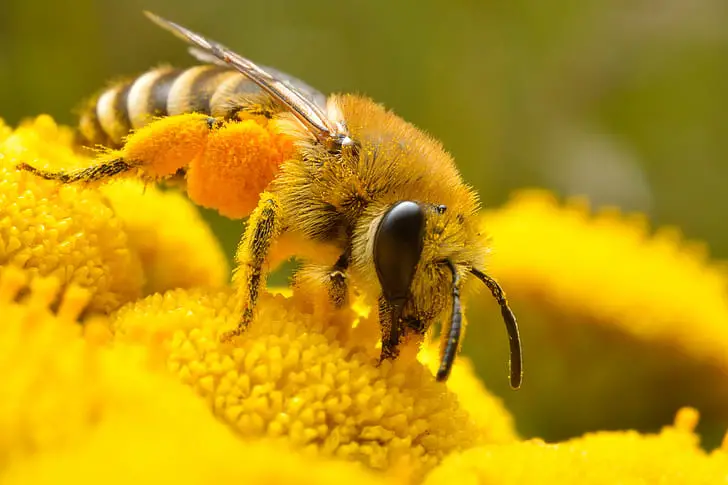
As we draw our exploration of urban beekeeping to a close, it’s time to reflect on what we’ve learned and look ahead to the future.
From understanding its growth and benefits to navigating its challenges and getting started, we’ve covered a lot of ground.
But the journey doesn’t end here. Whether you’re considering becoming an urban beekeeper or simply want to support this buzzing movement, there’s always more to discover.
So, let’s wrap up and consider the next steps on this sweet journey!
Recap of the Importance and Impact of Urban Beekeeping
Urban beekeeping is more than just a hobby, it’s a movement that’s transforming our cities, bringing nature back into our urban landscapes, and fostering a sense of community.
It’s about creating a symbiotic relationship with these incredible insects, providing them with a safe haven while they go about their crucial work of pollination.
The importance of this practice can’t be overstated. From supporting biodiversity to enhancing local food production and providing educational opportunities, urban beekeeping has a far-reaching impact.
Encouragement for Interested Readers to Learn More or Get Involved
If you’ve found this journey into the world of urban beekeeping as fascinating as I have, I encourage you to delve deeper.
There’s a wealth of resources out there to help you learn more, from books and online courses to local beekeeping clubs.
And if you feel inspired to become an urban beekeeper yourself, why not give it a go?
It’s a rewarding and enriching hobby that not only benefits the bees and the environment but can also bring a lot of joy and satisfaction.
Remember, every new beekeeper contributes to making our cities more bee-friendly places, and that’s something to be proud of!






